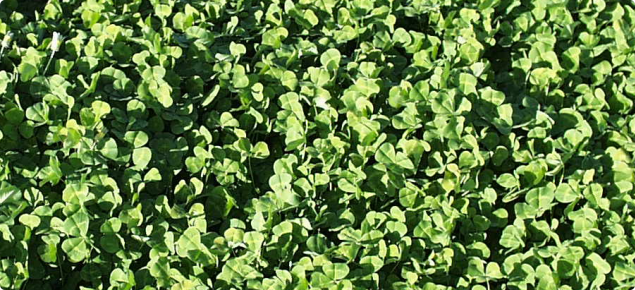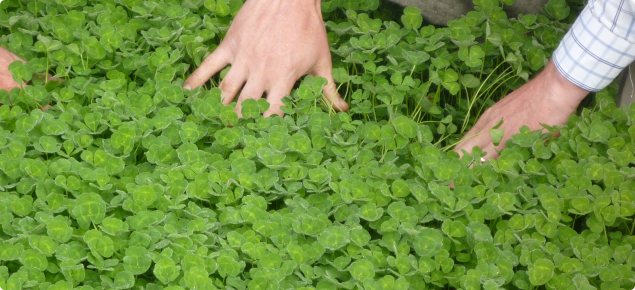A range of cultivars are available for areas ranging from 275 to 1200 millimetre (mm) annual average rainfall. Subspecies subterraneum is adapted to well-drained, moderately acidic soils. Subspecies yanninicum is suited to moderately acidic soils with poor drainage. Subspecies brachycalycinum is best suited to neutral-alkaline, cracking or stony soils and generally fails to persist in WA.
Use of subterranean clover
Subterranean clover (Trifolium subterraneum L.) is the most widely sown annual pasture legume in southern Australia. It is estimated to have been sown over an area of eight million ha in Western Australia (WA) and 29 million ha across southern Australia. Together with the use of superphosphate, subterranean clover has led to increased crop yields and greater animal production. It forms the basis of many permanent or semi-permanent pastures in high rainfall and irrigated areas. In low and medium rainfall areas it is commonly grown in rotation with cereal crops, although it is poorly adapted to intensive crop rotations, such as 1 pasture:1 crop. Its ability to fix atmospheric nitrogen (N) benefits growth of other species in the pasture and of following crops grown in rotation.
Subspecies
Subterranean clover has three subspecies (ssp):
- ssp. subterraneum (sometimes referred to as “black-seeded” types), adapted to well-drained, moderately acidic (pHCa 4.5-6.5) sandy-loam to loamy clay soils.
- ssp. yanninicum (sometimes referred to as “white-seeded” types, due to their cream-amber coloured seeds), adapted to poorly drained, moderately acidic sandy loam to clay soils.
- ssp. brachycalycinum, best suited to neutral-moderately alkaline (pHCa 6.0-8.0) cracking or stony soils.
Subspecies subterraneum is the most widely sown and has the most cultivars, while ssp. brachycalycinum generally fails to persist on WA soil types.


